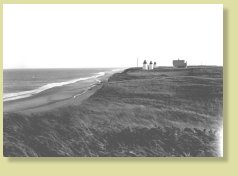 |
Robbins-Mills Collection of Herbert Wendell Gleason Photographic Negatives, 1899-1937 Concord Free Public Library — Special Collections |
Series III – Massachusetts, 1899-1937
 Series III (332 glass, 378 film) is organized into two subseries: Towns and Cape Cod. Subseries are arranged alphabetically by town and then by date. Towns are listed in alphabetical order by the current name of the municipality along with section and village names. Cape Cod towns are listed as a separate subseries based on Gleason's original grouping.
Series III (332 glass, 378 film) is organized into two subseries: Towns and Cape Cod. Subseries are arranged alphabetically by town and then by date. Towns are listed in alphabetical order by the current name of the municipality along with section and village names. Cape Cod towns are listed as a separate subseries based on Gleason's original grouping.
Towns (section/village names in parentheses) include: Acton (Acton Centre), Bedford (West Bedford Station), Beverly (Beverly Farms), Billerica (Billerica Centre and North Billerica), Boston (Allston, Charlestown, East Boston, Franklin Park, and Jamaica Plain), Boxboro (East Boxboro), Boxford, Carlisle, Chelmsford (North Chelmsford), Cohasset, Danvers, Essex, Gloucester (West Gloucester), Gosnold (Nashon Island), Hull, Ipswich, Lakeville, Lancaster, Lexington, Lincoln (South Lincoln), Lowell, Lynn (Lynn Woods), Lynnfield, Malden, Marblehead (Marblehead Neck), Medford, Middleboro, Milton, Nahant, New Bedford, North Andover, Peabody, Plymouth, Princeton, Revere, Rockport (Folly Cove and Loblolly Cove), Saugus, Scituate (North Scituate), Sterling (West Sterling), Stoneham, Sudbury (North Sudbury), Swampscott, Taunton, Topsfield, Tyngsboro, Wakefield (Montrose), Waltham (Waverley Oaks), Wayland (Cochituate), Wenham, Weston (Hastings and Silverhill), Westminister, Williamstown, and Winthrop.
Cape Cod towns include: Chatham (North Chatham, South Chatham, and West Chatham), Eastham, Harwich, Harwichport, Orleans (South Orleans), Provincetown, Truro (North Truro), and Wellfleet.
Subjects include bodies of water (brooks, bays, falls, ponds, and rivers); boats; botanicals (flowers, plants, and trees); buildings and structures (including bridges, dams, lighthouses, life-saving stations, and windmills); cemeteries; houses and farms; landscape features (boulders, hills, mountains, and rocks); natural phenomena (cloud effects, frost on windows, sand wavelets, and shell snow drifts); miscellaneous; monuments and historic markers; portraits; and Thoreauviana.
Bodies of water include the Concord, Shawsheen, Stillwater, and Sudbury Rivers, and Flint's Pond (Lincoln). Botanical images include individual flowers in vases, wildflowers, and ornamentals including roses from Mrs. Harriet Foote's rose garden (photographed in Boston). Mrs. Foote was a well-known rose gardener and author of books about roses. (For more images of Mrs. Foote's roses, see Series V.)
Bridges include Baker Bridge (Lincoln), Sherman's Bridge (Sudbury), and Stillwater Bridge (Lancaster). Gleason photographed several lighthouses along the Massachusetts coast including the "Bug" Lights (Ipswich), Gurnett Light (Plymouth), Highland Light (North Truro), Nauset Light (Eastham), Nix's Mate (Boston), and Minot's Ledge Light (Scituate).
Landscape features include: Folly Hill (Danvers), Reeve's Hill (Sudbury), Tilton Hill (Ipswich); Mt. Anne (West Gloucester) and Mt. Wachusett (Lancaster). Houses and farms include: DeCordova House (Lincoln), Nash Homestead (Lynnfield), Spaulding's Farm (Carlisle), and D. Ricketson's "Shanty" (New Bedford). Monuments and historic markers include: the Walter Haynes Garrison House Site Marker, Minuteman Boulder and Parker Monument (Lexington), Revolutionary Soldiers Monument (Acton Centre), and Truro Monument (Truro).
Thoreau-related images includes a copy of Thoreau's last letter to Daniel Ricketson and a photograph of Thoreau's flute on a music rack made by Walton Ricketson. Cape Cod images include: buildings (the Pamet River and Cahoon's Life-saving Stations, windmills at Chatham and Eastham, the Atwood House (Chatham) and old Ryder House in Truro); landscape features including "clay pounds" (North Truro), and herring ponds (Wellfleet); and plants, including bayberries, beach grass and poverty grass.
Individual portraits include: C.F. "Fred" Carter (Lexington), Gertrude Clark (Williamstown), Jackie and Sally Snelling (Gleason's relatives), and Amy Tenney and Prof. Tenney (Williamstown). Professor Tenney was a friend of Gleason's and professor at Williams College (Gleason's alma mater). Some images were used for Thoreau illustrations.